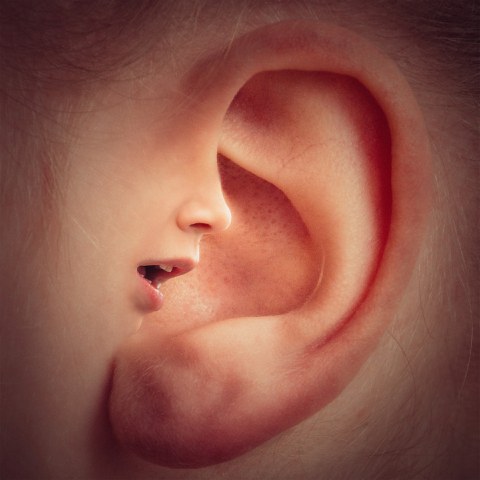Jan 08, 2021
We hear what we expect to hear
Dresden neuroscientists show that the entire auditory pathway represents sounds according to prior expectations. Their findings have now been published in the renowned scientific journal eLife.
Humans depend on their senses to perceive the world, themselves and each other. Despite senses being the only window to the outside world, people do rarely question how faithfully they represent the external physical reality. During the last 20 years, neuroscience research has revealed that the cerebral cortex constantly generates predictions on what will happen next, and that neurons in charge of sensory processing only encode the difference between our predictions and the actual reality.
A team of neuroscientists of TU Dresden headed by Prof Katharina von Kriegstein presents new findings that show that not only the cerebral cortex, but the entire auditory pathway, represents sounds according to prior expectations.

Axial view of the brain (from the top) including the inferior colliculus and medial geniculate body. The colour represents how well the data fits the hypotheses 1) that the brain encodes information according to expectations (red) or 2) that the brain encodes information according to the properties of the stimuli (blue).
For their study, the team used functional magnetic resonance imaging (fMRI) to measure brain responses of 19 participants while they were listening to sequences of sounds. The participants were instructed to find which of the sounds in the sequence deviated from the others. Then, the participants’ expectations were manipulated so that they would expect the deviant sound in certain positions of the sequences. The neuroscientists examined the responses elicited by the deviant sounds in the two principal nuclei of the subcortical pathway responsible for auditory processing: the inferior colliculus and the medial geniculate body. Although participants recognised the deviant faster when it was placed on positions where they expected it, the subcortical nuclei encoded the sounds only when they were placed in unexpected positions.
These results can be best interpreted in the context of predictive coding, a general theory of sensory processing that describes perception as a process of hypothesis testing. Predictive coding assumes that the brain is constantly generating predictions about how the physical world will look, sound, feel, and smell like in the next instant, and that neurons in charge of processing our senses save resources by representing only the differences between these predictions and the actual physical world.
Dr Alejandro Tabas, first author of the publication, states on the findings: "Our subjective beliefs on the physical world have a decisive role on how we perceive reality. Decades of research in neuroscience had already shown that the cerebral cortex, the part of the brain that is most developed in humans and apes, scans the sensory world by testing these beliefs against the actual sensory information. We have now shown that this process also dominates the most primitive and evolutionary conserved parts of the brain. All that we perceive might be deeply contaminated by our subjective beliefs on the physical world."
These new results open up new ways for neuroscientists studying sensory processing in humans towards the subcortical pathways. Perhaps due to the axiomatic belief that subjectivity is inherently human, and the fact that the cerebral cortex is the major point of divergence between the human and other mammal's brains, little attention has been paid before to the role that subjective beliefs could have on subcortical sensory representations.
Given the importance that predictions have on daily life, impairments on how expectations are transmitted to the subcortical pathway could have profound repercussion in cognition. Developmental dyslexia, the most wide-spread learning disorder, has already been linked to altered responses in subcortical auditory pathway and to difficulties on exploiting stimulus regularities in auditory perception. The new results could provide with a unified explanation of why individuals with dyslexia have difficulties in the perception of speech, and provide clinical neuroscientists with a new set of hypotheses on the origin of other neural disorders related to sensory processing.
Original publication:
Alejandro Tabas, Glad Mihai, Stefan Kiebel, Robert Trampel, Katharina von Kriegstein: Abstract rules drive adaptation in the subcortical sensory pathway. eLife 2020;9:e64501 DOI: 10.7554/eLife.64501
Media inquiries:
Dr. Alejandro Tabas (english)
Tel.: +49 351 463-43894
Prof. Katharina von Kriegstein (german)
Tel.: +49 351 463-439
Email:

